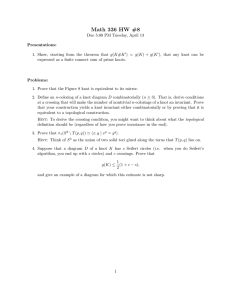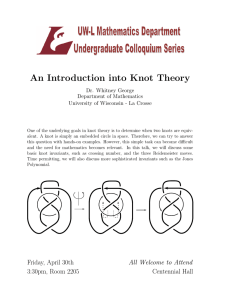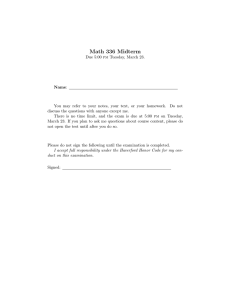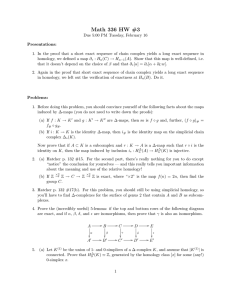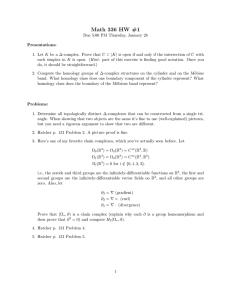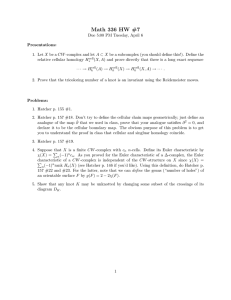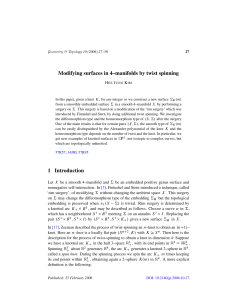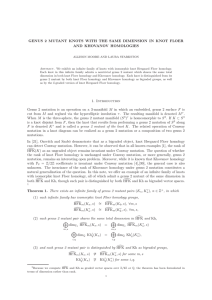Math 336 Final Exam
advertisement
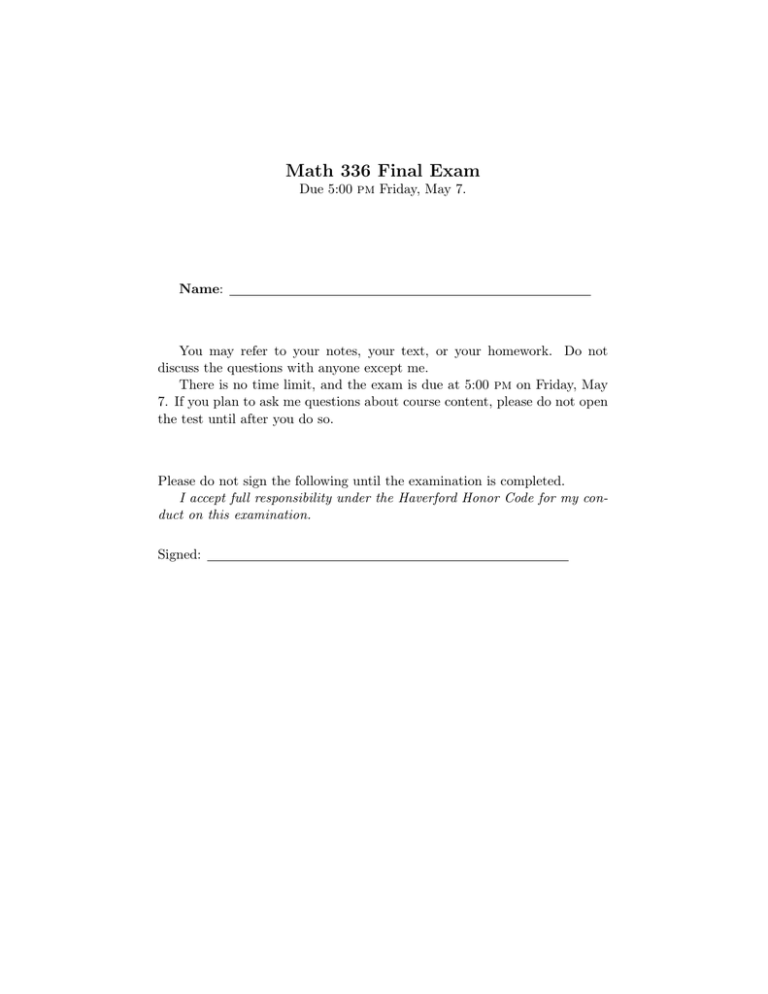
Math 336 Final Exam Due 5:00 pm Friday, May 7. Name: You may refer to your notes, your text, or your homework. Do not discuss the questions with anyone except me. There is no time limit, and the exam is due at 5:00 pm on Friday, May 7. If you plan to ask me questions about course content, please do not open the test until after you do so. Please do not sign the following until the examination is completed. I accept full responsibility under the Haverford Honor Code for my conduct on this examination. Signed: Each question is worth 10 points, for a total of 40 points. 1. Let X be the quotient space of S 3 under the identification x ∼ −x for x in the equatorial S 2 . (a) Find a description of this space as a CW -complex. Suggestion: do this for S 1 ⊂ S 2 first to gain intuition. (b) Compute the homology groups H∗ (X). 2. In this problem, you’ll prove Mayer-Vietoris using a different homological algebraic structure than the one used in class. (a) Consider the following commutative diagram: ··· - Cn+1 Bn - Cn - - - An ··· ? - - ··· ? - ··· An−1 - - En+1 Bn−1 - ? ? - En Dn - - Dn−1 Prove that the diagram above, with the top and bottom sequences exact, gives rise to an exact sequence: · · · → En+1 → Bn → Cn ⊕ Dn → En → · · · . (b) Suppose that A, B ⊂ X are open with X = A ∪ B. Prove that H∗ (A, A ∩ B) ' H∗ (X, B). (c) Use parts (a) and (b) to establish the Mayer Vietoris sequence for open A, B ⊂ X with X = A ∪ B. Hint: Consider the exact sequences of the pairs (A, A ∩ B) and (X, B). 3. Compute the first homology group of the 3-manifold that results from surgery on the following framed link, where m, n ∈ Z: m n 4. You’ve seen a rough definition for the Whitehead double of a knot K; let’s be a bit more specific. Starting with a knot K, let U be a tubular neighborhood of K and let ` be a longitude on U (remember, this means lk(K, `) = 0). In a solid torus V , let P be the following knot: r 1 Identify V with U so that the standard longitude of V is identified with the longitude ` in ∂U . The image of P under this identification is the r-twisted Whitehead Double W hr (K). Prove that, for any knot K, the double W hr (K) can be unknotted for at most one r ∈ Z.
